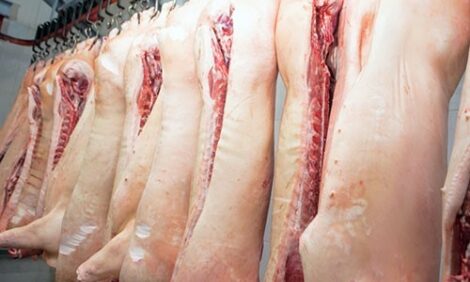



Corn Prices in Three Parts
US - Corn prices have recently moved in three distinct patterns. These include the patterns for new crop futures, old crop futures, and old crop cash prices, writes Darrel Good.December 2012 futures reached a high of $6.735 on 31 August 2011 and declined erratically to the current low of $5.15. The decline since the third week of April totaled about $.50. Continued weakness reflects a combination of large crop expectations and demand concerns. The early planting season along with non-threatening weather conditions to date have created expectations for an above-trend yield in 2012. In combination with large acreage, yield expectations point to a crop well above 14 billion bushels. New crop demand concerns are in two categories. First, the delayed and likely slow implementation of 15 per cent ethanol blends in the US fuel supply point to stagnating corn consumption in that category next year as the E10 blend wall rapidly approaches. Second, the European debt crisis, a slower pace of economic growth in China, and the slow pace of job creation in the US dampen commodity demand expectations for the year ahead. The one bright spot may be a larger export market for US corn as the USDA has recently announced large sales to both China and “unknown“ destinations. Conditions currently point to a substantial build-up of US corn inventories next year and increasing expectations that prices will return to the lower averages experienced in the 2007-08 through 2009-10 marketing years. Average prices received by farmers in that three year period averaged just under $4.00.
Old crop July futures reached a high of $7.95 on 30 August 2011 declined to about $5.92 on April 18, 2012 and are currently trading near $6.15. The premium of July futures over December futures is nearly $1.00 and has increased about $.36 over the past two weeks. Weakness in July futures reflects increasing expectations that old crop inventories, while tight, will be sufficient until new crop supplies are available. Old crop export sales have been brisk, but the pace of shipments remains well below the pace needed to reach the USDA projection of 1.7 billion bushels for the year. The pace of ethanol production suggests that corn use in that category will not exceed the USDA projection of 5 billion bushels. Use in the feed and residual category remains difficult to predict, but on the surface, declining animal numbers and prospects for increased wheat feeding point to weaker feed demand this summer. In general, the old crop price premium provides an incentive for users to delay consumption as much as possible until new crop supplies are available.
The expiring May futures contract has been much stronger than the rest of the futures complex and is currently trading about $.48 premium to July futures. That premium has increased about $.38 in the past two weeks. Similarly, old crop basis levels have been extremely strong since harvest and have continued to strengthen in recent weeks. The average spot cash price of corn in South Central Illinois, for example, was $.31 over July futures on 4 May. In the previous 6 years, the average cash price on that date was $.25 under July futures.
Declining futures prices, particularly for deferred contracts, reflect the expectations of adequate old crop stocks and prospects for a substantial increase in stocks next year. In that context, the higher price for May futures and strengthening basis levels remain a bit of a mystery. In general a strong basis reflects tight stocks or a slow pace of movement of corn to market relative to the pace of consumption. As pointed out in previous articles a strong basis pattern over an extended period, such as experienced this year, is unusual. Tight stocks that would result in a strong basis do not generally develop until late in the marketing year. As a result, most have attributed the strong basis to an on-going slow pace of sales by producers. If that is the case, basis levels should be expected to collapse whenever producers give up and move old crop stocks in preparation for harvest of a large crop. Alternatively, the long period of strong basis may reflect a higher rate of feed and residual use than has been revealed to date and the cash market’s expectation of much tighter year ending stocks. If that is the case, a strong basis may persist through the end of the marketing year. The question boils down to which market, cash or futures, has better anticipated consumption and ending stocks.
Price behavior after the May contract expires next week may provide some clues about the correct scenario. The 1 June stocks estimate will be more revealing and will provide for a more accurate forecast of year-ending stocks.








